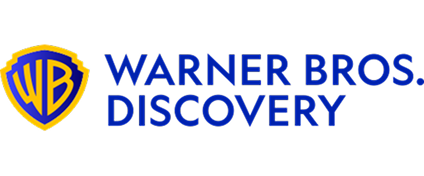The Big Five Film Studios: An Executive’s Guide to the Media Landscape

Introduction
The term “Big Six” has long been a part of the entertainment lexicon, a shorthand for the handful of major studios that dominated film production and distribution for decades. However, for a modern executive, relying on this outdated term is a strategic misstep.
The industry has consolidated dramatically, and the landscape is now defined by a new power structure: the “Big Five.” What this shift signals is not just a change in corporate names, but a fundamental realignment of the media supply chain.
The remaining studios are not just film producers; they are vast, vertically integrated conglomerates whose influence extends from theme parks and consumer products to global streaming platforms.
What this data tells us is that to navigate this environment successfully, you must understand the strategic imperatives of these five giants—their acquisitions, their streaming strategies, and their evolving role in a content-first world.
This guide is for you, the senior executive, whose success depends on staying ahead of these seismic shifts. We will move beyond the historical overview to provide a strategic analysis of the new “Big Five,” their core business models, and the competitive forces shaping their decisions.
By the end of this article, you will have a clear, data-driven perspective on the modern media ecosystem, empowering you to forge smarter partnerships, identify opportunities, and mitigate risks in a landscape dominated by these five global entities.
Table of content
- Introduction
- Key-Takeaways
- From the “Big Six” to the “Big Five”: Understanding the Shift
- The Big Five Film Studios: A Strategic Overview
- The Walt Disney Company: The Powerhouse of Vertical Integration
- Warner Bros. Discovery: A New Era of Synergy
- NBCUniversal: Content and Distribution on a Global Scale
- Sony Pictures Entertainment: A Diversified Content Model
- Paramount Pictures: A Legacy in the Streaming Era
- The Strategic Impact on the Media Supply Chain
- How Vitrina Helps You Track the “Big Five”
- Conclusion
- FAQs
Key Takeaways
- The “Big Six” is Obsolete: The entertainment industry has consolidated from the “Big Six” to a “Big Five” following Disney’s acquisition of 21st Century Fox, signaling a shift towards vertical integration and streaming-centric business models.
- Vertical Integration is the New Standard: The remaining studios are not just film producers. They are content engines for vast, multi-platform media conglomerates that own streaming services, theme parks, and cable networks.
- Strategic Priorities Are Diverse: Each of the five studios—Disney, Warner Bros. Discovery, NBCUniversal, Sony, and Paramount—has a unique strategic focus. Some prioritize leveraging IP across a single ecosystem (Disney), while others act as a powerful content supplier to the broader market (Sony).
- Data is Your Competitive Edge: Navigating this complex landscape requires a data-driven approach to track projects, executive movements, and collaboration histories. Traditional methods of business development are no longer sufficient.
- Vitrina is the Solution: The Vitrina platform is the essential tool for executives to gain a centralized, real-time view of the global media supply chain, enabling them to identify opportunities and de-risk deal-making with the major studios.
From the “Big Six” to the “Big Five”: Understanding the Shift
The concept of the “Big Six” defined the Hollywood studio system for years, encompassing a group of legacy studios: Warner Bros., Walt Disney Pictures, Universal Pictures, 20th Century Fox, Paramount Pictures, and Columbia Pictures (Sony Pictures).
This structure, however, was predicated on a pre-streaming business model focused on theatrical distribution and home entertainment.
My analysis of this historical period reveals a focus on siloed businesses, where each studio operated largely independently, even if under a larger corporate umbrella.
The transition to the “Big Five” was triggered by a series of high-profile mergers and acquisitions driven by the need for scale and content libraries to fuel direct-to-consumer streaming services.
The most significant event was Disney’s acquisition of 21st Century Fox in 2019, which effectively reduced the number of major players from six to five.
This move was not just a merger; it was a strategic consolidation of intellectual property and distribution channels to compete in a landscape increasingly dominated by companies like Netflix and Amazon.
What this tells us is that the remaining “Big Five” studios are no longer standalone entities. They are the content engines for colossal media conglomerates that include television networks, streaming platforms, and other business units.
This vertical integration has profound implications for every player in the media supply chain, from financiers seeking a distribution partner to vendors trying to secure work on a major studio project.
Access Vitrina's Real-Time Project Tracker Toda

The Big Five Film Studios: A Strategic Overview
The current landscape is defined by the strategic maneuvering of five dominant players. The term “Big Five” is a functional description of their combined market share and industry influence.
These companies are not just competing for box office returns; they are engaged in a multi-front war for audience attention, brand loyalty, and global market share across a range of media.
The following analysis provides a concise breakdown of each studio, focusing on its parent company and its strategic positioning within the modern ecosystem.
Understanding their parent companies is crucial. Disney Pictures, for example, cannot be viewed in isolation from Disney+, ESPN, or its theme parks. Similarly, Universal Pictures is one part of the vast Comcast and NBCUniversal enterprise.
This interconnectedness means that a decision made in one division can have a ripple effect across the entire business, influencing everything from production budgets to partner selection.
In my experience tracking thousands of projects, this level of corporate synergy is the single most important factor for an executive to understand when engaging with these studios.
The strategic framework for each studio is based on its parent company’s broader corporate goals, which are almost universally centered on driving subscriber growth for their streaming services and consolidating their intellectual property.
The “Big Five” have become the gatekeepers of a substantial portion of global entertainment, making an understanding of their internal strategies a prerequisite for any business development or content acquisition effort.
Track Exclusive Deals & Originals with Confidence

The Walt Disney Company: The Powerhouse of Vertical Integration
The Walt Disney Company is a masterclass in vertical integration.
It is not a film studio; it is a global media and entertainment ecosystem. The company’s strategic focus is on leveraging its intellectual property (IP) across multiple business units, from theatrical releases to Disney+ streaming, theme park attractions, and consumer products.
The acquisition of 21st Century Fox brought a massive content library and key franchises like the X-Men and Avatar under Disney’s umbrella, solidifying its market dominance.
Its studio divisions—Walt Disney Pictures, Pixar, Marvel Studios, Lucasfilm, and 20th Century Studios—operate as content engines, each with a distinct brand and audience.
For executives seeking to engage with Disney, it is important to recognize their emphasis on long-term IP management and franchise development. Their business model is not simply about one-off films; it is about building sustainable, multi-platform universes.
This approach demands that partners align with their brand standards and strategic vision. My analysis of their production slate reveals a clear preference for projects that can be extended into a series, a theme park ride, or a line of merchandise.
The scale of their operations requires a level of oversight and data clarity that is difficult to achieve manually, particularly for smaller firms.
Warner Bros. Discovery: A New Era of Synergy
Warner Bros. Discovery is a newer entity, born from the merger of WarnerMedia and Discovery, Inc. This combination created a media giant with an expansive portfolio that includes HBO, Warner Bros. Pictures, DC Studios, and a vast collection of unscripted content.
The company’s strategic imperative is to find synergies between these diverse assets and create a unified content strategy to drive growth for its streaming service, Max.
The studio’s legacy includes classic franchises and a deep library of both film and television content. This combination of scripted and unscripted IP offers a unique competitive advantage.
For outside partners, understanding Warner Bros. Discovery’s strategy means recognizing the importance of cross-pollination between their various brands. A project developed for Warner Bros. Pictures may have a clear pathway to a series on Max, and vice versa.
This interconnectedness demands that you have a clear view of their entire project pipeline, not just the film studio’s slate. According to a Variety article, the company’s focus is on leveraging this vast library to drive value and reduce content costs.
In this environment, a data-driven approach to tracking their projects and personnel is critical for identifying entry points for new business.
Map Studio Deal Histories Across the Supply Chain

NBCUniversal: Content and Distribution on a Global Scale
NBCUniversal, a subsidiary of Comcast, is another example of a vertically integrated media powerhouse. The company’s film studio, Universal Pictures, is one of the most consistent performers at the global box office, known for a mix of franchise blockbusters (Jurassic Park, Fast & Furious) and filmmaker-driven projects.
The studio’s parent company also includes NBC broadcast television, cable networks like Bravo and MSNBC, and the Peacock streaming service. This creates a powerful distribution and marketing ecosystem. Universal’s strategy often involves a strong focus on theatrical releases, followed by a windowing strategy that drives content to its own streaming platform.
Executives looking to partner with NBCUniversal need to appreciate the interplay between their theatrical and streaming businesses. While theatrical is still a key revenue driver, their long-term strategy is about using that content to acquire and retain subscribers for Peacock.
This means they are often seeking projects that have broad appeal and can be marketed across their various platforms. My analysis shows that their project pipeline is robust and includes a significant number of co-productions and co-financing deals, making them a key partner to track.
Their multi-platform approach creates both opportunities and challenges for outside firms. The opportunity lies in the potential for a project to reach a massive audience. The challenge is navigating the complexity of a company that is simultaneously a broadcaster, a studio, and a streaming service. Without a centralized view, you risk missing critical production and development intelligence that can help you secure a deal.
Sony Pictures Entertainment: A Diversified Content Model
Sony Pictures Entertainment (SPE) is a unique player in the “Big Five” landscape. Unlike its competitors, it is not tied to a single, monolithic streaming service. Instead, SPE leverages its content through a series of strategic partnerships with other platforms.
This model allows them to remain a powerful content provider without bearing the enormous cost of running a global streaming service.
The studio has a strong portfolio of franchises, including Spider-Man and Jumanthan, and a reputation for producing high-quality feature films and television series. Their parent company, Sony, also provides synergy through its electronics, gaming (PlayStation), and music divisions.
This strategy of remaining a powerful supplier of content to the broader market is a key differentiator. For you, this means Sony is often a more accessible co-production or distribution partner for certain types of projects, as they are not exclusively focused on filling a single streaming service.
Their model offers a degree of flexibility that other vertically integrated studios may not. In my analysis of the global market, I find that this approach has made Sony a highly sought-after partner for many independent production companies and financiers.
A strategic understanding of their project pipeline is therefore invaluable.
Get Your Vitrina Membership Today

Paramount Pictures: A Legacy in the Streaming Era
Paramount Pictures is one of the oldest and most storied studios in Hollywood, now a part of Paramount Global. Like its competitors, Paramount Global is a multi-platform conglomerate that includes the Paramount+ streaming service, the CBS broadcast network, and a portfolio of cable channels.
The studio’s recent strategy has been to balance its legacy of big-budget theatrical releases with a renewed focus on content that drives subscriptions to Paramount+.
This includes original films, series based on their IP, and a content windowing strategy designed to maximize value across both theatrical and streaming platforms.
For an executive, understanding Paramount’s strategic position requires acknowledging their dual focus.
They are simultaneously trying to compete in the blockbuster space with franchises like Mission: Impossible and Transformers while also building out a competitive library for their streaming service.
This dual mandate creates a dynamic environment for partnerships. My experience with this type of business model is that it often presents opportunities for external companies that can help fill specific content needs for either their theatrical slate or their streaming originals.
Having the right market intelligence to see these opportunities as they arise is a significant competitive advantage.
The Strategic Impact on the Media Supply Chain
The consolidation of the “Big Five” has created a media supply chain that is simultaneously more efficient and more complex. For a senior executive, this new reality presents a range of challenges, from understanding the specific content needs of each studio to navigating their internal corporate structures.
The traditional methods of cold calling and networking are no longer sufficient to secure a deal or partnership. You need a data-driven, strategic approach.
In this ecosystem, the ability to track a project from its earliest stages of development is paramount.
For example, knowing that a certain genre is being developed at one of the studios or that a key executive has moved from one studio to another can create a significant lead. A Hollywood Reporter article from a few years ago highlighted the hiring boom in streaming and production, and that trend has only intensified.
The industry is in a constant state of flux, and a comprehensive, real-time view is no longer a luxury—it is a necessity. The risk of being a reactive player in this market is simply too high, leading to missed opportunities and a loss of competitive footing.
The strategic challenge for every other player in the M&E space is to find their place within the Big Five’s ecosystem. Whether you are a financier, a production company, a localization vendor, or a VFX studio, your success hinges on a clear understanding of where these giants are placing their bets.
This requires tools that can give you a transparent, real-time view of their project pipelines, executive movements, and collaboration history, something that is nearly impossible to do without a dedicated platform.
How Vitrina Helps You Track the “Big Five”
Successfully navigating the modern media landscape requires more than just a passing familiarity with the “Big Five.” It requires a strategic, data-driven approach to understanding their project pipelines, their executive teams, and their collaboration histories.
This is where Vitrina’s platform becomes an indispensable tool for a content executive. Vitrina is the leading B2B platform that tracks the global entertainment supply chain, offering a level of visibility that is simply not available anywhere else. My experience with the platform shows that it helps executives move from a reactive to a proactive state.
Using Vitrina, you can track the thousands of projects the “Big Five” studios have in development, production, and distribution. Our platform’s advanced search capabilities allow you to filter by genre, budget, location, and key collaborators.
You can identify who is working on what, and with whom, giving you the early intelligence needed to make a strategic approach. For example, Vitrina’s data would show you that a specific studio is greenlighting a slate of new projects in a specific genre, allowing you to tailor your pitch and outreach with pinpoint accuracy.
The ability to see who a specific executive at Disney or Warner Bros. Discovery has collaborated with on past projects can be the difference between a cold email and a targeted, informed outreach.
Moreover, Vitrina provides comprehensive company profiles that show the full scope of a studio’s business activities, including their co-production partners, distributors, and service providers. For a financier, this means you can identify potential co-production partners that have a proven track record of working with a major studio.
For a service vendor, it means you can discover new projects as they are greenlit, giving you a crucial head start in securing business. In an industry defined by consolidation and rapid change, having a single source of truth for all of this data is a significant competitive advantage that de-risks your deal-making and business development.
Conclusion
The transition from the “Big Six” to the “Big Five” is more than a footnote in Hollywood history; it is a signal of a new, complex, and highly integrated media landscape. The studios that remain are not just distributors of content; they are vertically integrated conglomerates with multi-platform strategies.
For a senior executive, success in this environment is no longer about who you know—it is about what you know. It requires a data-driven approach to tracking projects, understanding executive movements, and identifying the strategic priorities of these major players.
The fragmentation of data across dozens of trade publications, news sites, and company press releases makes this task nearly impossible to do manually. The risk of working with incomplete or outdated information can lead to missed opportunities, poor investment decisions, and a loss of market share.
This guide has provided you with a strategic framework for understanding the “Big Five” and the challenges they present. The path forward is to adopt a platform that provides the centralized, real-time intelligence you need to turn these challenges into opportunities.
In this new era of studio power, the executive with the best data will be the one who wins.
The right partnership can define a film’s success and unlock future opportunities, ensuring your content pipeline remains robust and globally competitive for years to come.
Frequently Asked Questions
The term “Big Six” became outdated following Disney’s acquisition of 21st Century Fox in 2019, which consolidated the industry’s major players into a new power structure now often referred to as the “Big Five.
The “Big Five” are The Walt Disney Company, Warner Bros. Discovery, NBCUniversal, Sony Pictures Entertainment, and Paramount Pictures.
Vertical integration refers to a company owning multiple stages of its production and distribution process, such as a film studio also owning a streaming service, television networks, and theme parks.
Independent companies can compete by developing a niche, collaborating with one of the “Big Five” as a co-production partner, or using B2B platforms like Vitrina to track market needs and identify key contacts for financing or distribution deals.



























